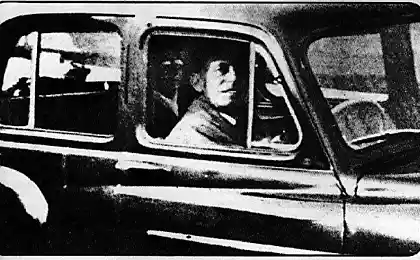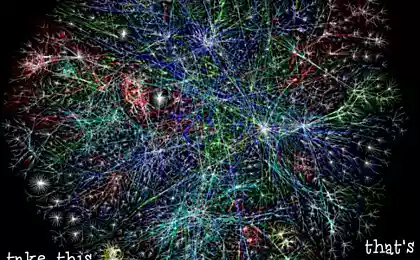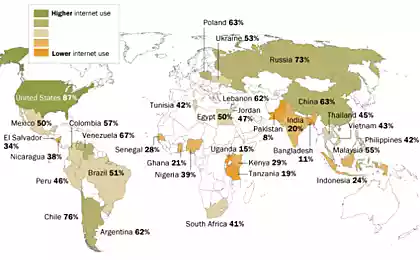604
The specter of the Internet in the USSR

Recently Russia celebrated the Day of the Internet. In 1998 company IT Infoart Stars has dispatched letters to various organizations with a proposal to designate 30 September as the day of the Internet and conduct a census "of the population of a Runet". This figure consisted of 1 million users. Today, 18 years later, this figure has more than 80 million users.
In other countries the international Internet day is celebrated on 4 April, the day of the death of the medieval Archbishop of St. Isidore of Seville, who is the Creator of the first encyclopedia "Etymologiae", consisting of 20 volumes. He was appointed the Catholic Church the patron Saint of the world wide web, which has called the Internet the modern encyclopedia of human knowledge. Saint Isidore of Seville was the first to use the cross-reference system in his encyclopedia, reminiscent of today's hyperlinks in the Network.
The need appeared on the Internet during the Cold war, when the United States needed a reliable system of information transmission that would their job in case of destruction of the computers of a nuclear strike. In the USSR also conducted a parallel development in the field of computer communications, beginning in 1952. They were held in the framework of the military-industrial complex and had to strengthen the country's defense.
Soviet development
Military computer network A. Kharkevich
The idea of creating a single computer network in the USSR appeared in 1962. Head of the Department of technical physics, Kiev, Institute of physics Ukrainian Academy of Sciences Alexander Kharkevich published in the journal "Communist" an article in which he advanced the idea of creating a single computer network. He drew Parallels between this network and the networks of transportation or electricity and proposed to establish a Unified national system of information transmission that would work on the basis of already existing channels of electric communication.

A key role in it was assigned a computing and control centres, which were to obtain data in digital form — "a sequence of some numbers." Kharkevich said that the network structure must take into account the possibility of overload or failure of one or another of her plots. In this case, the data stream must be sent on detour. On this principle, now the Internet works. Uninterrupted operation the network must be provided by the centralized automatic control.
In the article he noted the existence of analogues of such a system abroad — Sage (Semi-Automatic Ground Environment), but they do not have a unified command center and are divided into different companies and agencies. "SAGE" is a semi — automatic system able to simultaneously process data from 23 regional centers in the USA and Canada, and to serve a great network of radars and other detectors were created to manage the entire air defense of the States. The device I / o system supported by telephone lines continuous communication between the neighboring centers.
Cybernetics at the forefront
The program of the CPSU adopted at the XXII Congress in October 1961, Cybernetics has taken a leading role in the development of the country. The computer system was to be used in production processes, construction planning, scientific research and other fields. Initially, the development of models and methods of computer planning and management of the economy was involved in a small group of scientists. But soon, in 1960, organized the first cyber conference. The automation of the national economy was doing about 40 institutions. By 1967, the Scientific Council on Cybernetics coordinated research by 500 institutions.
The earliest development in the field of computer networking and automated management of the economy involved the use of existing in the Soviet Union communications and computer capacity. They were created in response to the American SAGE.
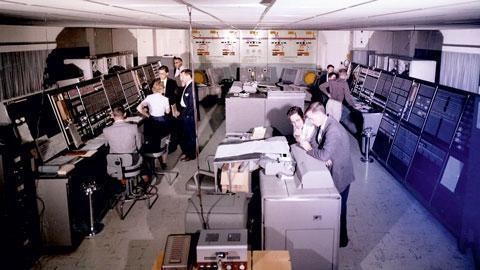
The USSR intended to use the power and traffic channels of the system air and missile defense to create a centralized system of collection and processing of statistical information for peaceful purposes.
National automated accounting system Glushkov
In November 1962 the Chairman of the USSR Council of Ministers Alexei Kosygin was invited to his office the Director of the Kiev Institute of Cybernetics Victor Glushkov. Glushkov proposed a new plan to create a network that is not related to military to the grid.
A plan to implement a computer network involves the creation of 100-200 of the largest data centers in large cities that will be connected 20 thousands of small towns via high speed communication lines.
Glushkov has developed this plan not only mathematicians, but also economists. Therefore, the main objective of the project was to facilitate data collection in offices and in production. At this time in the USSR data were collected separately and through different channels, which among themselves did not overlap. The project involved creating a centralized information gathering.
Obstacle to its implementation was the ability to connect to a single network for all enterprises. The process of computerization in all sectors led to the writing of SOFTWARE is not compatible with the other businesses. This meant that the introduction of a unified system.
It all started with the World
Glushkov created the world's first personal computer — WORLD 1, a machine for engineering calculations, which he presented in 1967 at an exhibition in London. Computers of the time occupied a few rooms, while WORLD 1 was placed on the Desk and it had all basic principles of modern PCs. It used speed microprogram control. Some researchers have rightly called the WORLD the prototype of the modern computer.

At the exhibition WORLD 1 bought IBM, which supplied almost 80% of computers worldwide. This was the first and the last case of the purchase of a Soviet electronic machine American company. Americans bought the machine not only to study but also to prove to the competitors, patented in 1963, the principle of the step microprogrammable that Soviet scientists had carried out this principle in production cars.
Glushkov issued an international certificate, according to which he recognized the Creator of the first personal computer.
The WORLD and Internet
This involved the creation and launch of the system, consisting of hundreds of devices of the type WORLD that was connected to a network according to the principle similar to the principle of the modern Internet. In the final stages of development of the World Glushkov proposed to use it for work nationwide automated system of management of the economy. Thus, the Soviet project was ready for implementation in the fall of 1963.
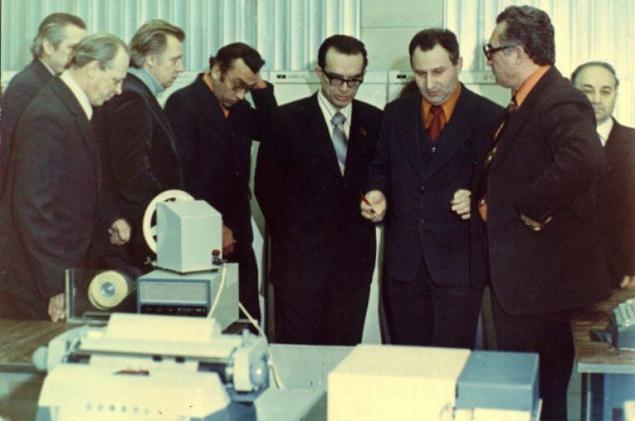
According to the plan Glushkov, the cost of the Soviet Internet would have amounted to 20 billion rubles, and the payback period is not less than 100 billion rubles for three five-year plan.
The change of government, changed the attitude to this project. Automated control systems have found application only in defense plants. Work in this direction was shelved.
Meanwhile in America, the ARPANET
But in America things were different. Scientist Joseph Carl Licklider Robnett demonstrated the idea of creating an extensive computer network in the United States a few months after the submission of the project information network Glushkov in February 1964. This was the first step towards the implementation of the system of the ARPANET.
Two years later than in the USSR, in 1966, America was launched on the draft design of the information network, and by 1969 it was implemented.

January 1, 1983 the ARPANET was the first network in the world, switched to route the data packets. As a routable Protocol used TCP/IP, which to this day is the main transfer Protocol on the Internet. This date is the date when the modern Internet.
The decline of the USSR and "Relcom"
August 1, 1990 appeared the first network of Federal scale — "Relcom" (the name is derived from RELiable COMmunications — reliable communications), which became the progenitor of the "Runet". The network was built on the basis of the Institute of atomic energy. I. V. Kurchatov and was formed by the development and implementation of the e-mail system with the use of addressing to the Internet for computers, connect a telephone communication channels. At the first stage it included users from scientific institutions of Moscow, Leningrad (St. Petersburg), Novosibirsk and Kiev.
August 28, 1990 was held the first session of a modem connection, the Soviet computer (IAE them. Kurchatov) with the foreign terminal (University of Helsinki) with the aim of establishing a regular channel of mail transfer on the Internet (from time payment of phone connection). The network was based exclusively on the technology of electronic mail to UUCP, and with the ability to correspond in Russian.
September 19 "Relcom" and "demos" recorded for the Soviet Union top level domain .su.
In the spring of 1991 the value of the content of the Soviet of the Internet for internal users was higher than the international.
The subsequent history of the development of the Internet took place in Russia since 26 December 1991 happened the collapse of the Soviet Union.
Conclusion
The ambitious plans of the USSR on the creation of the Internet was far ahead of his time. Technological capabilities allowed us to create this network in 1963. But she faced a lot of problems associated with its implementation. Not accidentally the Internet think a fifth power — it is a sign of freedom society, which opens a whole Treasury of knowledge, does not have its limits. The ideology of the socialist state could not allow their adjusted (like any machine) structure, the element of freedom, to predict the development and consequences of which are quite difficult.
Sources:
- The history of Internet development in the Soviet Union.
- Reasons why the Internet in the USSR, and has not appeared.
- A history of the Russian Internet.
- Figure of the week: the audience of a Runet has exceeded 80 million people
Source: geektimes.ru/company/mailru/blog/280988/



